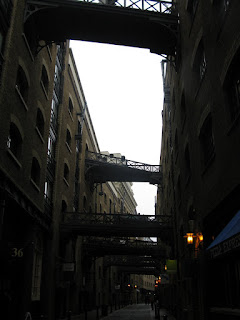Last Friday, there was a lecture by Patrik Schmacher in Berlage institute, which is about "Autopoiesis and the societal function of architecture". Although the author found it really bored about the lectures, he still went there because of his fascination about "parametricism".
In the more then 2.5-hour-lecture, Schumacher summarised and briefly explained some of the topic from his recently published book, which the main key points are "Autopoiesis, the societal function and parametricism". Although the author kind of does not fully understand the topic, he had a positive attitude towards the lecture.
Autopoiesis - self-creation?The author does not have any clues about this word as he heard of the word only the first time. (Though he was get used to that, as architects like to use some unknown and fancy words to describe something could be more understandable.) But as his understanding, autopoiesis of architecture describes the process of the architectural development from the ancient time in which is based on sets of comprehensive architectural theory. And during the lecture, Schumacher raised the question about the next development phrase of architecture after post-modernism. Surely, as he is the "parametric-men", he suggested that parametricism would be the next.
Societal function of architecture?However, much of the time on the lecture has been focused on the discussion of contemporary societal function of architecture, which the author found that is not that interesting at all. All of these discourse only shows his argument about how distinct the architecture is from other societal parties such as art, politics, science, etc.
In between, there was audience questioned about the way Schumacher to perceive the architectural development, based on his own statement that the development was similar to DNA development, which is a process of elite selection. Indeed, the author has no doubt that it could be a potentially interesting topic, though seems the issue is a bit too surreal.
ParametricismAfter long hours, he started to show some projects by his office. As he mentioned with the photos along, he is fancy about the interior space with simultaneous participation, which forms a network of multiple activities.
CommentIn conclusion, this lecture gives the author a chance to look at different angle of views towards how the thinking methodology of a star architect is to accomplish this kind of unique style, although apparently the lecture did not focus on the theatrical side of the parametricism. Instead, he talked more about the relationship between architecture and socio-sphere, which the author did not expected to see it from a guy who did a lot of fancy architecture.










